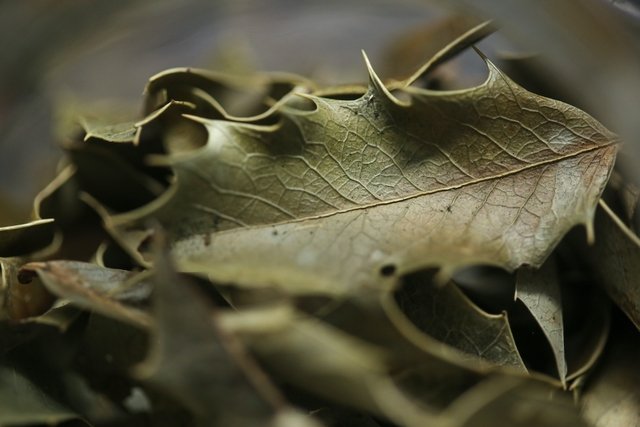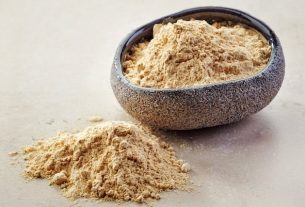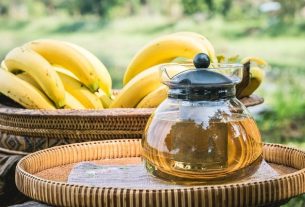The espinheira-santa is a medicinal plant of the species Maytenus ilicifoliarich in flavonoids, tannins and triterpenes, which have antioxidant, healing and gastric protective properties, and are therefore popularly used as a home remedy to help treat gastric ulcers, heartburn, gastritis, acne or eczema.
The normally used part of the espinheira-santa are the leaves from which the active substances are extracted, which can be used in the form of tea, compresses, fluid extract or capsules, found in herbalists or health food stores.
Although it has health benefits, the use of this medicinal plant does not replace medical treatment and should always be done with medical advice, or from another healthcare professional who has experience with the use of medicinal plants.

What is it for
Due to its medicinal properties, espinheira-santa is normally recommended for:
1. Improve stomach problems
Espinheira-santa is rich in tannins, such as epigallocatechin, and polysaccharides, such as arabinogalactan, with strong antioxidant, anti-inflammatory and gastric protective action, which help to improve stomach problems such as gastric ulcers, heartburn, gastritis, poor digestion or pain stomach.
This is because the active substances in espinheira santa help reduce stomach acidity and protect the stomach from the acid it produces, relieving gastric symptoms such as pain or a burning sensation in the stomach.
Furthermore, some studies (1,2) carried out with rats in the laboratory also show that espinheira-santa has a similar effect to cimetidine, a medicine used to reduce the production of acid in the stomach.
2. Fight the H. pylori
Some studies (3,4) show that espinheira-santa also has antibacterial action, being very useful for fighting bacterial infection H. Pyloriwhich can cause stomach injuries and ulcers.
3. Help in cancer treatment
Studies (4) Using lung, breast and liver cancer cells, they showed that espinheira santa can reduce the proliferation of cancer cells, due to the presence of the triterpenoid pristimerin. However, more studies in humans are still needed to prove this benefit.
4. Improve intestinal function
Espinheira-santa can help improve intestinal function as it has a mild laxative action. Therefore, drinking tea from this plant can help treat cases of mild to moderate constipation.
5. Has a diuretic action
Espinheira santa has a mild diuretic action, which means that it eliminates excess fluid from the body, which can be useful to help treat fluid retention, but also in the treatment of urinary infections, as it keeps the urinary tract clean.
6. Help with skin healing
Espinheira santa has analgesic and healing effects, which when used on the skin, can help in the treatment of skin problems such as eczema or acne.
7. Fight bacterial infections
Some studies (6,7)in vitro carried out in the laboratory show that espinheira-santa has substances with antimicrobial action such as maitenin and friedelin, which help fight bacteria such as:
- Staphylococcus aureuswhich cause lung, skin and bone infections;
- Streptococcus sp., which cause urinary, skin or gum infections;
- Escherichia coliwhich causes urinary tract infections;
Furthermore, espinheira santa also has action against the fungus Aspergillus nigrans which can cause aspergillosis. Find out what aspergillosis is.
How to use
Espinheira-santa can be used in the form of tea or capsules, prepared with the dried or fresh leaves of the plant.
1. Espinheira-santa tea
Espinheira-santa tea must be prepared with the dried leaves of this plant and used for a maximum period of 6 months of treatment, as per medical advice.
Ingredients
- 1 teaspoon of dried espinheira-santa leaves;
- 1 cup of boiling water.
Preparation mode
Place the espinheira santa leaves in a cup of boiling water and let it rest for 5 to 10 minutes. Strain and drink warm, up to 3 times a day, on an empty stomach, or about 30 minutes before meals.
2. Espinheira-santa capsules
Espinheira-santa capsules can be found in a dose of 380 mg of dry extract of the leaves Maytenus ilicifolia and should be taken whole with a glass of water, without opening the capsules or chewing them.
The normally recommended dose is 2 capsules of 380 mg of espinheira-santa, 3 times a day, that is, every 8 hours, before the main meals.
3. Espinheira-santa fluid extract
Espinheira-santa fluid extract must be taken orally, with the recommended dose being 15 to 20 drops diluted in 200ml of water, 3 times a day after meals, or as recommended by a doctor.
4. Espinheira-santa compresses
For skin problems such as eczema, scars or acne, hot compresses with espinheira-santa tea can be applied directly to the lesion.
Ingredients
- 3 g of dried espinheira-santa leaves;
- 150 mL of boiling water.
Preparation mode
Add the dried espinheira-santa leaves to the boiling water. Wait for it to warm and apply to the affected skin daily.
Possible side effects
The most common side effects that may occur during the use of espinheira-santa are a feeling of dry mouth, nausea or changes in taste, especially when used in larger amounts than recommended or for more than 6 months.
Furthermore, espinheira santa can cause allergic reactions and therefore, its use should only be done with medical advice or from a health professional with experience in medicinal plants.
Who shouldn’t use
Espinheira-santa should not be used during pregnancy, as it can cause uterine contractions and miscarriage, and it should also not be used by breastfeeding women, as it can cause a reduction in the amount of breast milk.
The plant should also be avoided by children under 12 years of age or people who have a known allergy to espinheira-santa.

Sign up for our newsletter and stay up to date with exclusive news
that can transform your routine!
Warning: Undefined array key "title" in /home/storelat/public_html/wp-content/plugins/link-whisper-premium/templates/frontend/related-posts.php on line 12
Warning: Undefined array key "title_tag" in /home/storelat/public_html/wp-content/plugins/link-whisper-premium/templates/frontend/related-posts.php on line 13



